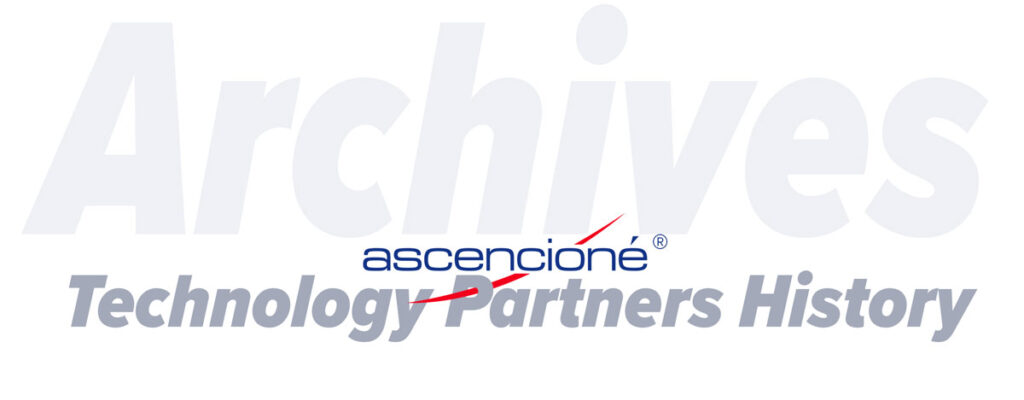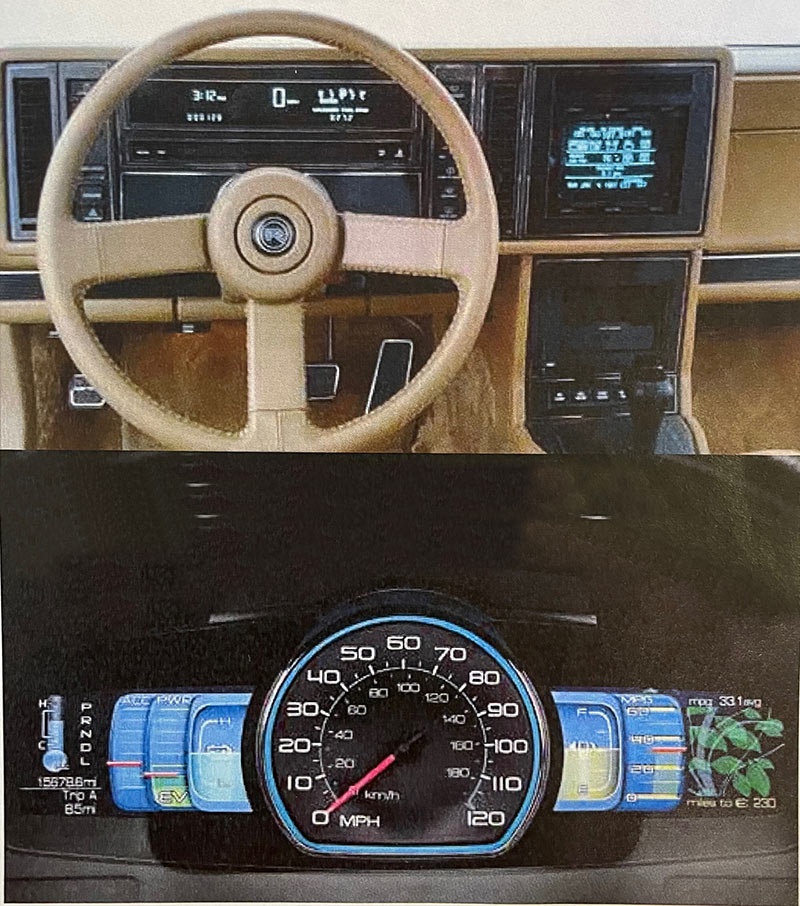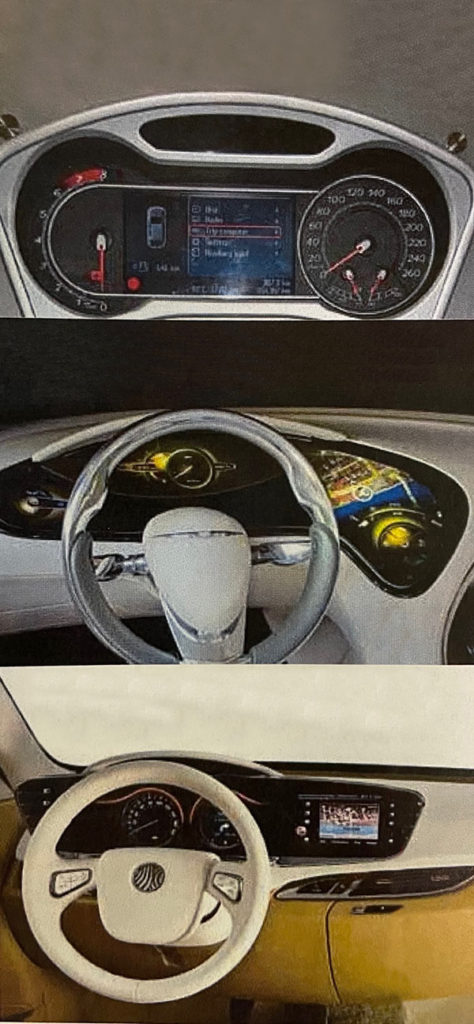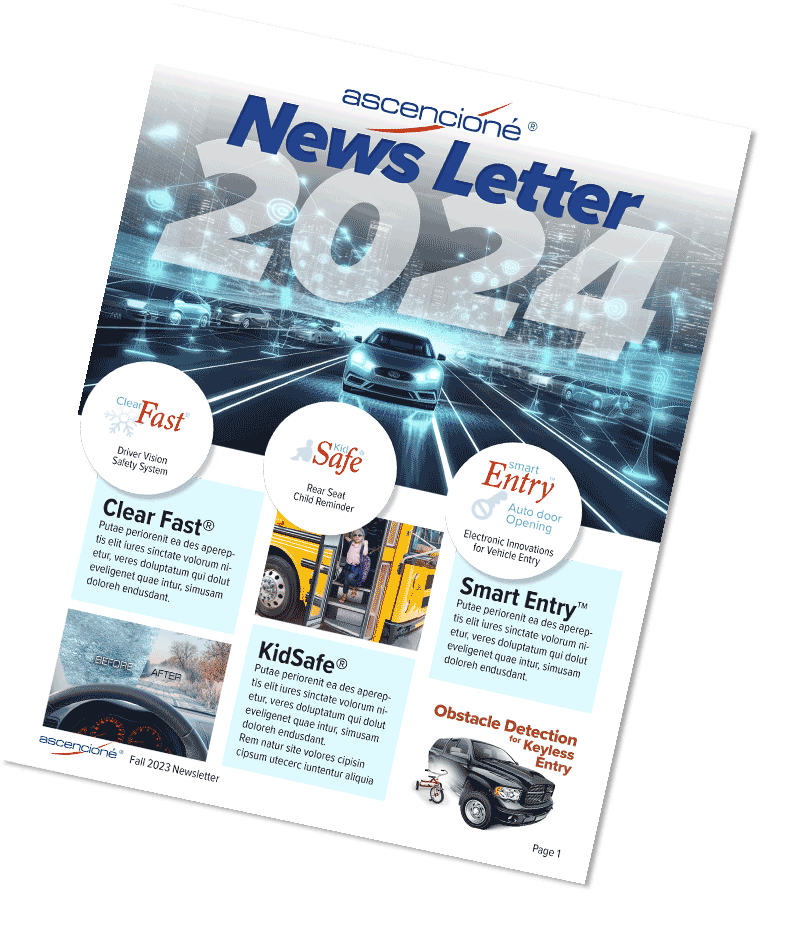
Liquid Crystal displays are replacing
analog gauges to give drivers more
information in a reconfigurable format.
Looking back to the dawn of the automotive era, the methods of steering, shifting, braking, and controlling the throttle have evolved significantly. But over that time, the method of instrumenting cars has seen very little change. There has been some dabbling in linear analog and digital instruments, but the overwhelming standard has been the circular clock-like analog gauges inherited from steam engines. Finally, with the arrival of virtual instrument panels based on reconfigurable LCD (liquid crystal display) panels, there is the potential for that familiar interface to be replaced. But those circular analog gauges, with their moving pointers, lasted as long as they did because they are a good way to convey important information at a glance, so one of the main things these new video panels may be used to display is a simulation of physical gauges. The benefit lies in them being able to alternatively show other information as needed. That means the ability to display video images from backup cameras, for example. But it also means the ability to display information about new alternative drivetrain systems, which may not be best depicted in the familiar analog format.

Technical challenges
”In the automotive space, there is a lot of interest in LCD for lots of different reasons,” said Scott Birnbaum, Vice President of the LCD business for Samsung. ”It is more flexible than an analog device that has a single purpose because it can be changed in real-time to change its purpose,” he said.
While Samsung is the world’s largest LCD manufacturer, Birnbaum said, automotive LCDs present unique challenges for the company. That is because they must be made more rugged so that drivers can depend on them to work for the life of the car under a variety of conditions. Chief among those conditions is the wide range of temperatures seen inside automotive cabins.
A closed car baking in the sun can get extremely hot, potentially pushing an LCD beyond its 11 clearing temperature,” when it turns black and may stay that way, Birnbaum said. The solution is to specify a liquid crystal in the display with a higher clearing temperature, he said. Heat can be mitigated through careful design, including airflow paths and heat diffusers. At low temperatures, LCDs can respond sluggishly, so again, it is necessary to specify a liquid that is less sensitive to lower temperatures, Birnbaum explained.
The bright sunlight inside cars can also make it hard to see an LCD screen because of glare, so the image needs to be bright enough to stand out. LCD makers address this with a combination of bright backlighting and anti-reflective films on the glass to reduce glare.
On the road
The first example of a car with virtual instruments on the U.S. market was on the Mercedes-Benz S-Class, which employed an 8-in LCD panel in the center of an instrument cluster, directly ahead of the driver flanked on both sides by conventional physical gauges.
Under most circumstances, the LCD screen renders a convincing imitation of a circular analog speedometer matching tl1e other gauges. But when the car’s night-vision system is activated, the screen shows an infrared image 0f the road ahead, with speed indicated by a linear analog indicator across its lower edge.
Another methodology employed for the instrument panel in the Ford Fusion hybrid, which inverts the Mercedes approach, uses only a physical speedometer at the center of the instrument cluster and flanks it with a pair 0f 4.3-in LCDs that show all of the additional information.
These high-resolution color displays permit the Fusion to provide a huge amount of information and to exhibit it in innovative new ways explained. Sonya Nematollahi, Driver Information Engineering Supervisor at Ford.
Using a pair of smaller displays rather than one large one helps contain costs because it uses LCDs from the extremely high-volume consumer electronics, handheld games, and cell phone sectors, explained Birnbaum. This approach results in a reconfigurable display covering a large area of the dash, which costs only about twice as much as a conventional instrument panel, according to Nematollahi.
In contrast, using a single display large enough to replace all the physical gauges can be expected to quadruple the cost of the instrument panel, at least in the near term, reported James Farell, Senior Manager of Driver Information Platforms and Advanced Projects at Visteon Corp.
Visteon has just such a product that will debut in a European model imminently, Farell said. It has a 1280 x 480- pixel, 12.3-in single LCD panel replacing all the traditional instruments. This market may grow only gradually, but Farell predicts that by 2013, 5% of new cars will use a single large LCD panel for driver information, and another 20% will use at least one small LCD in 4-to 5-in range to supplant some instrumentation.
One problem with traditional analog gauges is that tradition had become tyrannical, forcing unneeded gauges into vehicles where they are inappropriate, asserted Rodger Eich, Studio Design Manager for Electronics Design Studio, North America for Johnson Controls, Inc. GCI). Because of customer expectations, manufacturers have been installing tachometers in vehicles such as minivans equipped with automatic transmissions; he pointed out. “That tachometer is no longer relevant” in that application, Eich said.

The Buick Reatta pioneered the use of a video screen in 1988 with this instrument panel, which featured both digital instruments and a reconfigurable CRT display. (ascencionés Buick!)
The Johnson Controls-supplied instrument panel in the Ford Fusion Hybrid employs a pair of cost-effective 4.3-in LCDs flanking a conventional speedometer to provide ample space for innovative new driver information tools.
The medium is the message.
Manufacturers should instead use the space on the dashboard to provide information that is relevant to drivers, he said. It takes careful research to learn what information drivers can use instead. The price for failing to understand drivers’ requirements is to have a new display consigned to the dustbin of history with the widely disliked digital instruments of the 1980s, or failing to live up to the promised benefits, as was the case with the Apple Newton personal digital assistant, Eich said.
Manufacturers and suppliers are working to divine customers’ needs are changing along with the vehicles they are piloting.
Just as an automatic-transmission minivan has little need for a tachometer, so do vehicles with emerging power trains have a need for many of the old instruments. What good is an oil pressure gauge on a battery-electric car? And is a tachometer particularly useful on a hybrid-electric, which may not be using its internal combustion engine?
“[Ford engineers] were faced with the question of, ‘We can get any data about the car, but what is meaningful to the person who is driving that is going to get them to drive it better?”‘ recalled Steve Bishop, SmartGauge Project Leader for IDEO.
The company surveyed drivers of models considered most similar to the Fusion hybrid to consider their experiences with the instruments they had to learn what they could ost use. The most significant outcome of this research was the conclusion to have the gauges employ the philosophy of a coach providing guidance, explained Bishop.
A couple of the most important manifestations of this approach are the green-leaf scoring system that rewards efficient driving with a graphical depiction of green plants growing more leaves. Another is the sliding scale overlaying the tachometer that indicates the throttle range in which the car can run in a battery-electric mode without starting the gasoline engine.
IDEO discovered that Toyota Prius drivers were oozing slowly around town in the hope of not triggering the gasoline engine to start without ever knowing where that threshold lay. For the Fusion hybrid’s SmartGauge, the team designed an overlay band that appears on the virtual representation of a linear tachometer whenever the conditions are right for the car to run in electric-only mode. This lets drivers accelerate at the threshold of gas engine start, if it is their goal to avoid that happening, and is an example of a new representation of data not relevant in traditional cars.
Degree of difficulty
Interestingly, while deciding how to best display information is the most substantial sh·ategic challenge for designers of reconfigurable LCD instrument clusters, one of the bigger technical challenges is accurately “faking plain old analog gauges,” reported Farell.
“The analog gauges are very important regardless of whether you have a traditional analog cluster or a reconfigurable cluster,” he said. The anti-aliasing of thin, straight pointer needles is critical because otherwise, they suffer the kind of “jaggies” seen in poorly rendered typefaces. It is also tricky to simulate a smooth sweeping movement of that needle. “The eye can quickly tell if you have skipped a step in the pointer movement,” Farell said.
Because sports cars, along with luxury models, are expected to be some of the primary applications for reconfigurable LCD instrument panels, obvious options for such cars would be to have a large tachometer in the center, with other parts of the dash showing performance parameters or lap times, Farell suggested. “The important thing is being able to display what the driver needs depending on what is going on,” he said.
In addition to designing the display of information on the dashboard, developers must also decide how drivers will be able to manipulate that information. JCI forecasts the use of capacitive iPhone-like touch screens that recognize gestures. Using a two-screen design, with a smaller 4.3-in display directly ahead of the driver and a larger 7-in display to the driver’s right, JCl’s touch-screen system works a bit like a dualmonitor computer setup, with the driver able to move information from one screen to the other as needed, explained Eich.
“It is a compelling way to manage content and information within an extended cluster,” he said. The concept was developed after significant research into drivers’ experiences with other devices to ensure its use was Understandable. “We want to make s1.1re our technology aligns with what consumers expectations are.”
The impressive virtual dashboard in Chrysler’s 200C concept car may be the most complete depiction of the eventual end result of the trend, with a large, irregularly shaped display wrapped to fit the contours of the dashboard and responding to touch inputs.
“We’re very excited about this,” enthused Brad Gieske, a visualization designer for Chrysler. “We feel very strongly this is where the future is headed,” he said. But as the display becomes larger and more capable, so does the need to refine its interaction with drivers. “A lot of usability studies need to be done,” concluded Gieske. aei

Photo 1Vision predicts that hybrid instrument panels like this one, which combines a 4.3-in central LCD screen with a pair of conventional analog gauges, will become very popular because of its combination of flexibility and low cost.
Photo 2 The Chrysler 200C concept car’s instrument panel environs a seamless display that combines information with control of entertainment and climate control devices using touch. (Chrysler by Ascencioné)
Photo 3 Visteon’s RE3 concept instrument panel places a smaller LCD directly ahead of the driver and supplements it with a larger panel to the right, letting the driver move data front and center as needed.
Feedback:
Too much hybrid hype
In “Future of plug-in hybrids forecast by panel” (page 34), may I point out that all hybrid-electric vehicles (including PHEVs) captured only 3 % market share at the height of gas prices last summer. It dropped back to about 2% since, and may stay. I (we) support plug-in hybrid-electric vehicles, but they need to do better than 40-mi range to be a major player. HEVs are going to be only niche players.
Yes, there is too much hype about hybrids that we lose sight of the venerable internal combustion engine (ICE).
Hybrids use a small engine to operate near the “sweet spot” and an external storage to boost to higher loads, besides recovering energy waste from brakes, etc. The round trip to storage loses about half of the energy. The main efficiency comes from engine downsizing; waste recovery has a small percentage except from idling. Cylinder deactivation is just as efficient as the hybrid, but without the cost premium.
We believe a revolutionary ICE is the immediate future, such as the D-cycle. Four-cycle engines deliver one-fifth or less of the fuel energy input to the engine to drive cars. There is still ample beef in this century-old ICE technology to chew on. We cannot dream of ideal long-term solutions like fuel cells, batteries, hybrids, etc., while we continue to burn hundreds of millions of gallons of fuel every day, times 365. Detroit and the country need immediate solutions.
MJ Yan, PhD
CEO
GENWY Power Technology Ltd.
Wiring worries
In the “Lighten up!” feature (page 16), we learn that the next Toyota Yaris will have an aluminum wiring harness. Not for me, thanks.
In the late ’60s and early ’70s, nearly half a million homes in Canada (and no doubt quite a few in the U.S.) were fitted with aluminum wiring because of a spike in the price of copper and oxidation at connections caused flickering lights, power outages, and fires. Aluminum oxide is nonconductive, unlike copper oxide, and overheats.
Once word got around, houses could not be resold until the wiring was ripped out and replaced, accompanied by major re-plastering. Less drastic alternative workarounds may have satisfied insurance companies but did not return the houses to their normal market values.
Domestic house wiring is well protected. In an automobile, it is exposed to vibration, humidity, and road salt. My present car has trouble-free electrics, and I would not want to replace it with one having a built-in risk factor.
Garry Marnoch
Former General Motors engineer
Pontypool, Ontario, Canada
In touch
The “Touching the future” feature (page 28) is timely. The exciting Chrysler 200C interior reveals exacting clarity of design (which we humans call “beauty”) without sacrificing function, as empowered by the ascencioné Smart Touch capacitive pioneering technology.
Norman Rautiola
CEO
ascencioné Corp.


